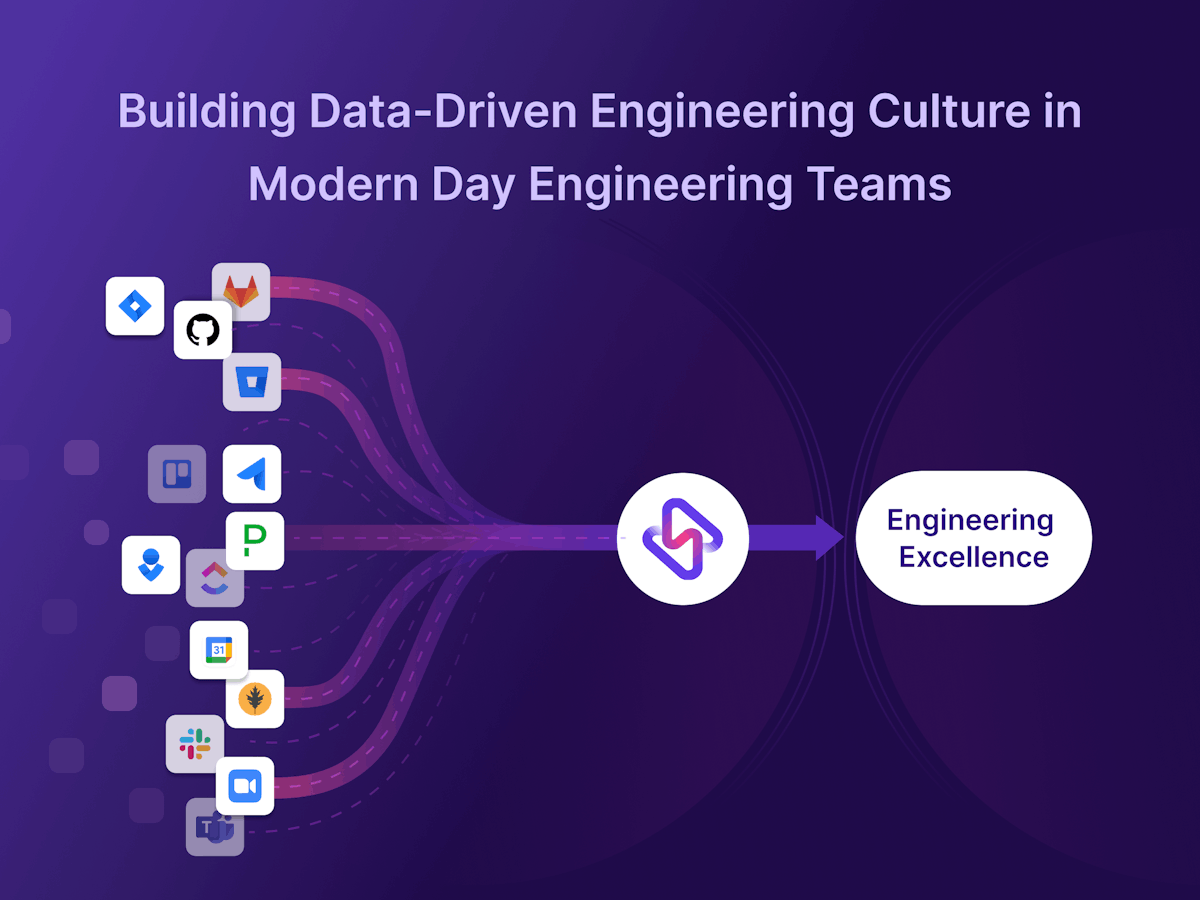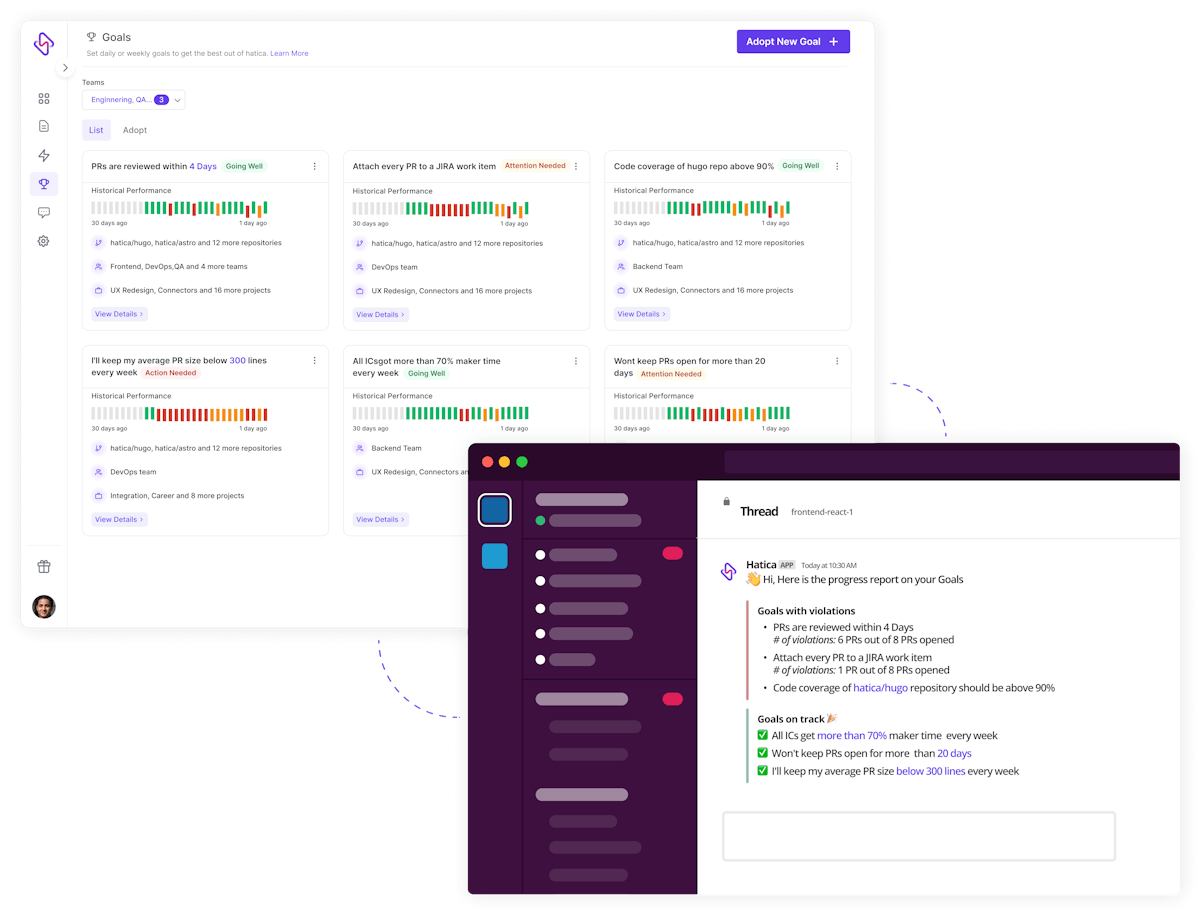Everytime I have met an engineering leader, this has been a constant question in all of these conversations, “Are you data blind or data-effective?” And the responses to these questions have never stopped to surprise me.
In the dynamic landscape of technology, the success of any engineering team is intricately tied to its ability to harness data effectively. A data-driven approach not only empowers teams to make informed decisions but also fuels a culture of continuous improvement and engineering excellence. In this blog post, I am going to talk about the key strategies for building data-driven engineering teams and how platforms like Hatica can be pivotal in this transformative journey.
1. Define Clear Objectives
To start building a data-driven engineering team, it's essential to define clear objectives aligned with business goals. Understand what success looks like for your organization and identify the key performance indicators (KPIs) that matter the most to you and your team. These objectives will serve as a compass for your team, guiding them in their data-driven endeavors.
This is where tools like Hatica provide a myriad of metrics that can be helpful & confusing if there is no clear objective. For many teams that are new to the notion of measuring developer productivity or engineering excellence, the best first step is to align on what are the objectives and then work down from there to the metrics that matter.
Also, keep in mind that the same metric may not be relevant to every team, some teams might be inherently better on cycle time than others but might struggle with low planning accuracy. Encourage teams to scour through the data but foremost have them identify areas of improvement and define the objectives for themselves.
By defining custom teams in Hatica, it is possible for engineering managers and leaders to quickly hone in on the metrics that their team needs to focus on.
2. Establish a Culture of Data Literacy
Data literacy is the cornerstone of a successful data-driven culture. But the hard fact is it doesn’t come naturally to either teams or their leaders. Once you have defined clear objectives for your engineering teams, you will have to consciously make an effort to ensure that your engineering team is well-versed in interpreting and utilizing data. You will have to provide training sessions, workshops, and resources to enhance their understanding of data analysis tools and methodologies.
A well-informed team is more likely to derive actionable insights from the available data. Or else the data is going to be confused for a means to micromanage the team which is only going to be counterproductive. By relying on the data at each stage of the Engineering system from planning through, execution & retrospection, teams don’t fall back into their old ways.
Hatica enables short-linking dashboards for easier sharing, so everyone looks at the same data points with 1-click. Additionally, by integrating with email, Hatica reports provide a proactive view to engineering leaders on a regular basis. In 2024, we will take this to a whole new level by integrating other communication channels beyond email & Slack and releasing new AI models that proactively surface insights as soon as the teams log into the dashboards.
3. Implement Robust Data Infrastructure
This has not been easy though. Building a data-driven engineering team in 2024 requires more than just goals and dreams. You need a rock-solid data infrastructure.
In 2024, investments in tools that simplify data integration, storage, and retrieval is going to be inevitable. Hatica’s engineering management platform empowers teams with a centralized platform for teams to access, analyze, and visualize data effortlessly, along with comprehensive data management.
In 2023, we brought together data from a variety of engineering data sources and we will continue to enrich our engineering data ecosystem by bringing in new data sources.
Already, Hatica is the only tool that has as many distinct connectors. That said, we heard your feedback, so going into 2024 will be releasing connectors for Asana, Sonarqube and many more.
Additionally, we are committed to not just surfacing the insights from our data platform, we will democratize this data by exposing it directly via a querying interface.
I cannot wait for that to happen. You ask for it, and Hatica will be able to answer that for you in an interactive-intuitive fashion.
4. Encourage Cross-Functional Collaboration
The whole idea of breaking work silos and bringing teams together with the help of data has been our goal. A data-driven approach involves input from various departments. To foster an environment where engineers, data scientists, and business analysts can collaborate seamlessly, sharing insights and leveraging each other's expertise; it is imperative that this cross-communication is on an autopilot mode rather than demanding huge manual intervention.
For this to happen, it is important that the management has a north-star metric to align themselves to.
5. Define Key Metrics and Key Results (OKRs)
Establishing key metrics and key results (OKRs) then becomes crucial for steering your engineering team in the right direction towards that North Star metric. Define specific, measurable, achievable, relevant, and time-bound goals aligning with your business objectives.
One has to regularly track and evaluate progress to ensure that the team stays focused on achieving its key results. And back that up with data - even better!
In 2023, we introduced Hatica Goals which serves as the foundation for teams to define working agreements & hold themselves accountable to continuous improvement.




